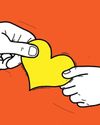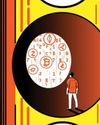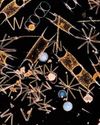
“If we can pull it off, it would be the biggest possible thing still to be accomplished in Himalayan mountaineering.” —Norman Dyhrenfurth, on the west ridge of Mount Everest.
When the Americans prepared to ascend Mount Everest in 1963, they trained their eyes on the unclimbed west ridge route as an additional challenge for their expedition. Before them, only two other parties had succeeded in making the summit: Edmund Hillary and Tenzing Norgay in 1953, and a Swiss expedition three years later. Both had taken what was by then a well-tested route, via the South Col and southeast ridge. But summiting the world’s highest peak via the west ridge was still not accomplished. For, summiting a peak was one achievement, but even back then, there were bragging rights associated with treading an unknown route to the top.
By the end of that season, the American expedition would go down in history for the heroics of Tom Hornbein and Willi Unsoeld, who pulled offa daring climb via the west ridge, a difficult route full of unknowns, with points of no return that that required the duo to fend for themselves en route the summit.
These days, while hundreds of commercial climbers get to the top of the Everest each spring— according to the Himalayan Database, in the 2019 season 692 climbers made it to the top—the lure of the less trodden path remains a constant attraction for seasoned professional mountaineers and explorers, as does the seduction of raising the stakes.
This story is from the {{IssueName}} edition of {{MagazineName}}.
Start your 7-day Magzter GOLD free trial to access thousands of curated premium stories, and 9,000+ magazines and newspapers.
Already a subscriber ? Sign In
This story is from the {{IssueName}} edition of {{MagazineName}}.
Start your 7-day Magzter GOLD free trial to access thousands of curated premium stories, and 9,000+ magazines and newspapers.
Already a subscriber? Sign In

Home-Cooked Meal Is Now Greatly Valued
The pandemic has also brought with it an improved focus on hygiene, use of technology in dining, rise of cloud kitchens and resurgence in popularity of Indian ingredients

Paytm 3.0 - Reaching Near Breakeven In Two Years
As of 2020, Vijay Shekhar Sharma’s super app for financial services had run up losses in thousands of crores. Now, as digital payments gets yet another boost courtesy Covid-19, he’s hopeful of reaching near breakeven in two years

THE PANDEMIC HAS CAUSED WOMEN GREATER LABOUR PAIN
Covid-19 has shown that women are more likely to face the brunt of job losses than men, and find fewer opportunities when they want to resume. That apart, several have to deal with increased hours of unpaid work at home and even domestic abuse

LEADERSHIP WILL BE ABOUT SEEING THE BIGGER PICTURE
Leaders must not only guard their teams first during a crisis, but also deal with stakeholders with respect and dignity. And apart from pursuing business goals, they should remain committed to our planet and the environment

PHILANTHROPY SHOULD BE HUMBLE, BUT NOT MODEST
Apart from building a flexible and resilient framework for the future, philanthropists, civil society and the government must work in tandem so that every rupee is absorbed on the ground

INTEGRATED HEALTH CARE, TECH WILL DISRUPT SECTOR
While clinical research will get a boost, having a skilled workforce and public spending on health care will be challenges in the near term

DIGITALISATION WILL HELP IN VALUE CREATION
As the pandemic brings technology and innovation to the core of business and daily life, the next decade will see about 150 million digital-first families in India

Industry 4.0: Climate Revolution?
Augmenting sustainability alongside digital capabilities is an economic, competitive and global opportunity for India’s businesses, but regulations need to reflect intent

EV Dream Still Miles Away
Electric vehicles have remained a buzzword in India for years. But not much has moved on ground due to high upfront costs, range anxiety and charging infrastructure

Living Waters
A virus has caused us to scramble for oxygen but our chokehold on the environment is slowly strangling the very waters that breathe life into us. The virus is a timely reminder: We are merely consumers, not producers of life’s breath on this planet